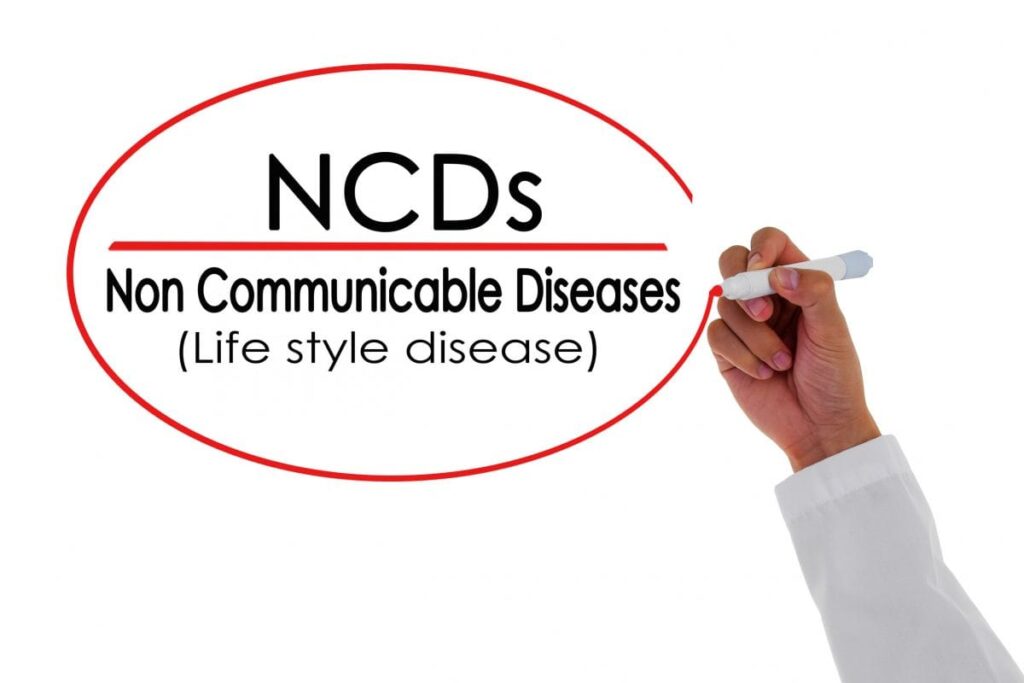Following millions of deaths worldwide as a result of the COVID-19 pandemic, countries have been left to scramble to find ways to combat, and even prevent, future pandemics. Targeting noncommunicable diseases (NCDs) may seem counterintuitive when discussing infectious diseases, but the rationale for this approach may be the key to addressing the issue.

In an opinion piece in The Indian Express by Praveen Pardeshi, global programme coordinator for the Defeat-NCD Partnership, it is suggested that targeting underlying health conditions could be key to preventing further outbreaks — or at the very least, mitigating their impact. The logic behind this thesis is that numerous studies have shown that over seventy percent of mortalities associated with COVID-19 are due to underlying noncommunicable diseases like diabetes, cardiovascular ailments and cancer.
Pardeshi states “India’s NCD mortality rate at 558 per 1,00,000 population is significantly less than its neighbours and, correspondingly, the COVID case fatality rate in India is significantly better.” The claim of India’s mortality rate being lower than other countries is disputed by many, with some claiming that death tolls are likely far higher than is currently being suggested in official figures. However, the logic behind the statement is backed by figures. A study led by the Defeat-NCD team (in which Pardeshi was involved), along with the Economist Intelligence Unit and Viatris, indicates that every ten percent decline in the underlying NCD mortality rate leads to twenty percent decline in COVID-19 fatality rates.
Globally these figures appear to stand true. Large numbers of COVID-19 deaths have been attributed to those affected by diseases such as cardiovascular disease, diabetes, and cancer, as well as those who are immunocompromised.
India is no stranger to NCDs, with figures rapidly escalating in recent decades. Health Issues India noted in 2019 that “over the last 25 years, India has seen a fifty percent rise in heart disease cases according to doctors at the Meenakshi Mission Hospital and Research Centre.” Other diseases such as cancer and diabetes are also on the rise, together accounting for more than fifty percent of deaths within the nation.
Many with these conditions are not adequately managing their health, whether through lack of knowledge or lack of access to healthcare facilities and treatments. It is these individuals who are particularly prone to more severe effects of COVID-19. By reducing the numbers of individuals with NCDs, the impact of future pandemics may be severely reduced.
The World Health Organization (WHO) has placed pandemic preparedness at the forefront of its agenda. At the highest levels it is believed that COVID-19 is unlikely to be the last pandemic we face in the coming years. With this in mind we must do everything we can to either prevent this eventuality, or curtail its effects.
Predicting, and therefore, attempting to prevent a future pandemic is an almost impossible task. As COVID-19 has demonstrated, a novel virus can spread at the global level in just a few short weeks. International travel means that a disease can originate in one country and spread to any other nation within a period of 24 hours. In such situations, it is practically unrealistic to expect to entirely prevent the spread of infectious disease.
We can, however, control and attempt to reduce the rate of NCDs. By limiting the effects of these conditions we would not only be reducing the considerable death rates that these diseases reap by themselves, but also reducing susceptibility to severe cases of infectious disease including complications – some lasting – and fatalities. This applies not just to COVID-19, but other infectious diseases as well. Investing in healthcare infrastructure and capacity to reduce NCD rates may therefore be similar to vaccination in that it could be among the most effective healthcare investments.

